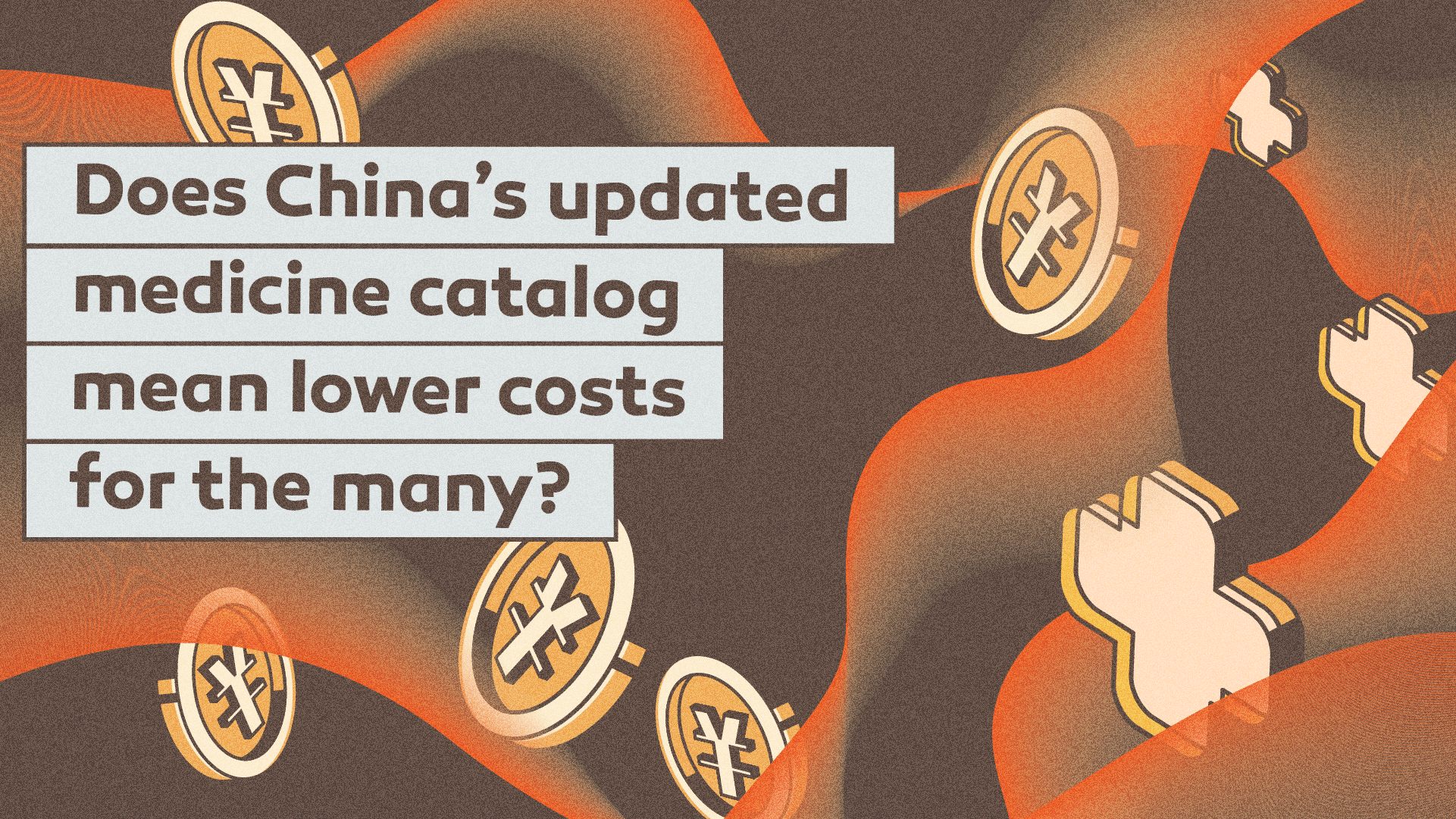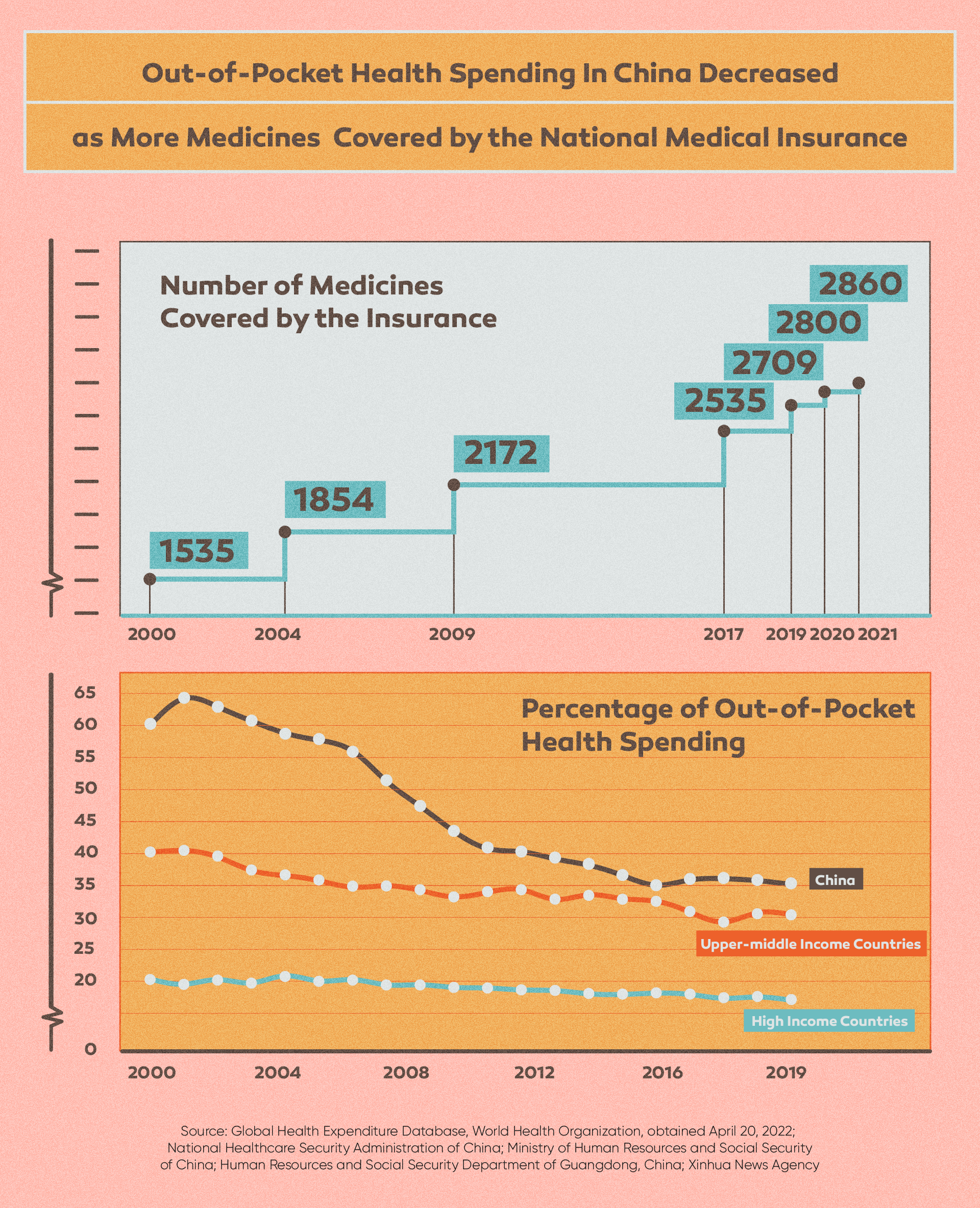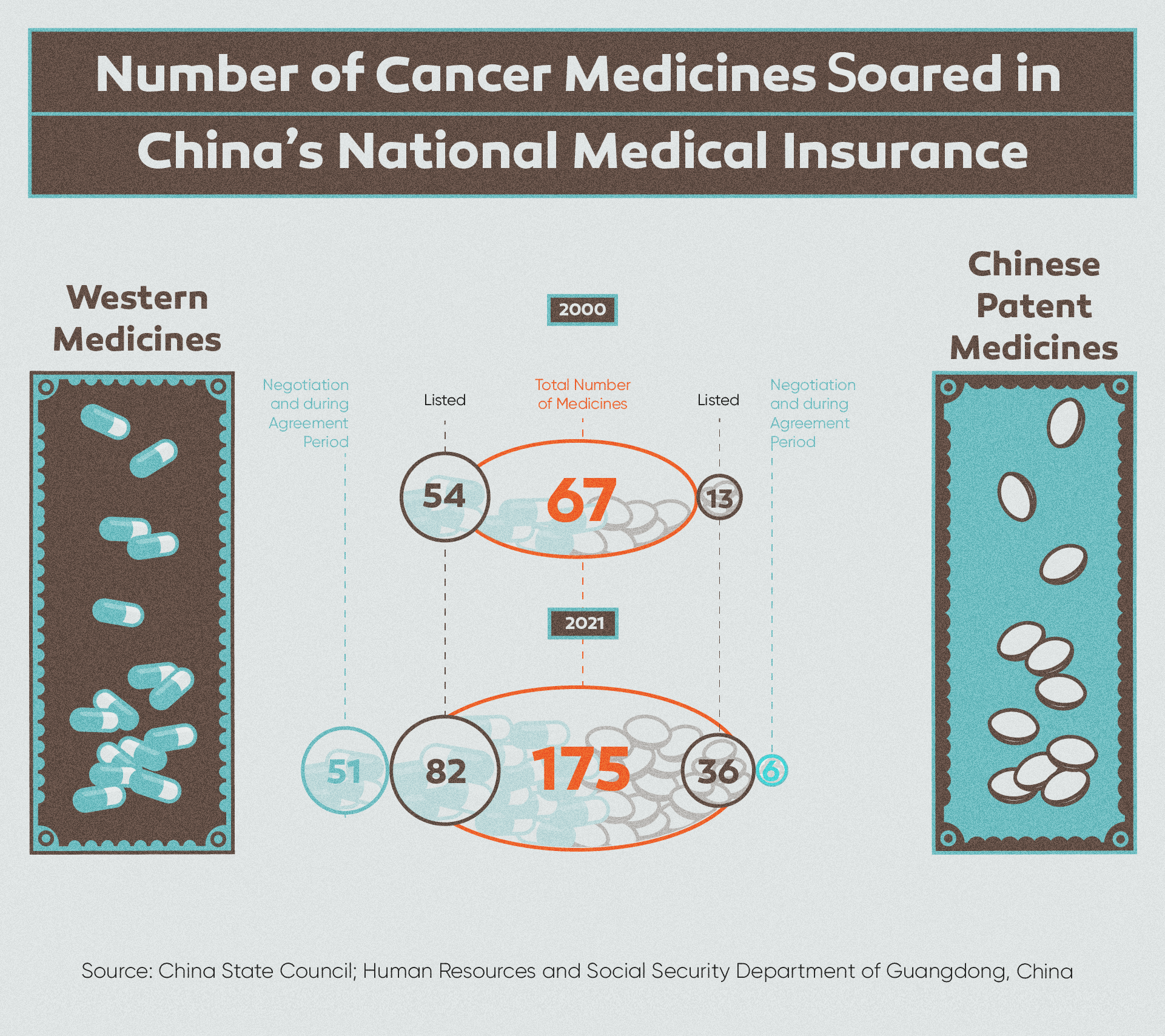03:00

Zhang Yi's mother was diagnosed with lung cancer last May. Treatment for the elderly lady, who lives in Guizhou, China, could cost as much as 50,000 yuan, or about $7,500, per month. Zhang was shocked to discover.
But because her mother was covered by the national basic medical insurance plan, the doctors were able to reassure her – the costs would be manageable, coming in at around 1,000 yuan per month.
Since 2011, China's basic medical insurance coverage has stabilized at over 95 percent of the population, a rare achievement in a developing economy.

Aided by strong political will and fast economic growth, the country has raised the number of medicines covered by insurance from 1,535 in 2000 to 2,860 in 2021, increasing the medicines listed in the medicine catalog by 86 percent.
So what has been the impact been on Chinese people's medical expenses?
First, let's take a look at whether the medicine catalog's expansion has lowered the share of out-of-pocket expenses for people's total healthcare costs.
The answer is a clear yes. Data shows that when more medicines get listed in China's basic medical insurance, the share of out-of-pocket costs in people's total healthcare spending dropped below 40 percent for the first time in 2012, and dropped to 35.2 percent in 2019.

Nonetheless, this proportion remains higher than in the average upper-middle income countries, let alone the high income ones, showing that China still has a lot to do to catch up.
Second, let's check the number of medicines listed in the catalog for treating critical diseases, including cancer. Ultra-expensive medicines, if not listed, could quickly drag a financially healthy family into bankruptcy.

The good news is, the number is rising. Let's take cancer medicines as an example. From the catalog's first edition to its latest, cancer medicines in the antineoplastic category increased from 67 in 2000 to 175 in 2021, an indication of China's determination to cut medical expenses for cancer patients.
Medical insurance coverage at over 95 percent, an updated catalog including nearly 3,000 medicines and an increase of listed medicines for critical diseases demonstrate Beijing's ongoing commitment to lower the medical costs for the many.
(If you want to contribute and have specific expertise, please contact us at opinions@cgtn.com. Follow @thouse_opinions on Twitter to discover the latest commentaries in the CGTN Opinion Section.)